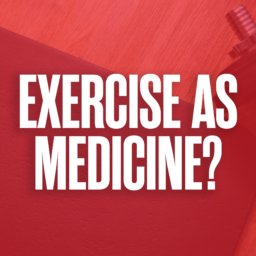Figuring out what to do is by far the most challenging portion of restarting a fitness journey. We are inundated with options toward the goals of fat loss, muscle gain, total weight loss with options like machines, cardio, free weights, plyometrics, calisthenics, and so on, the list goes.
It is easy to fall into the thinking, “I do everything I possibly can!”
More is better, right?
Well, not necessarily.
Step 1: Narrow the Field
If you’ve taken significant time off from training, it may be tempting to dive right back in. You’re not alone.
But before we rush to lift or move in ways we had before our hiatus; it pays to be reminded of some simple foundations to a good plan of action.
Experienced coaches and trainers follow basic principles, guidelines that we know are effective because they have withstood the test of time.
One such principle is the principle of specificity.
Essentially, it takes time to perfect a skill. It is beneficial to specify some primary movements and stick with them for a month or more.
Adhering to this notion allows you to practice sound techniques that expedite your path to regaining those gains. In other words, how you move informs what you move, and it applies to all fitness goals.
Speaking of goals, as set by trainees, they tend to fit three categories; aesthetics, health, and performance.
There are some excellent movement patterns to fit all of these. While no exercise is fundamentally better than another, certain ones hold higher esteem within muscle development and fat loss through metabolic health. More or less, they are gold standards.
These include; a) squat, b) deadlift, c) bench press, and d) overhead press. There are abundant variations on these movements, so it doesn’t all have to be barbell work.
We recommend some less intensive variations to cue muscle memory.
Consider kettlebell variations, bodyweight, or banded movements to begin the reconditioning process to avoid the aches and pains (and other potential setbacks) of rushing too quickly back into things.
Pick four simple movements to get you hinging again. For example;
Kettlebell Swings (ideal for hip-drive)
Goblet Squats
Kettlebell RDLs
Kettlebell Clean & Press
Band Assisted Pullups
Dumbbell Bench Press
Step 2: Sweat the Technique
The technique is the closest thing to a magic pill in strength and fitness. Start light, and groove your movements.
Remember that you do not need a whole gambit of complex activities.
Specifying your training to simple and effectively loaded exercises is all you need, not a different set of routines on a daily or weekly basis.
It facilitates learning. A better-learned pattern is a better-looking pattern, and skillful movement is efficient. Motor-skill development means those heavier weights become lighter just by virtue of enhanced skill. [1]
Now you can hit stimulating, total body sessions every time.
(By the way, via this approach, you are training for performance. Looking good [aesthetics] and feeling better [health] happen to be byproducts of performance increases.) [7]
It is also recommended that you include warmup protocols at the forefront of every session.
Staples in my training include the McGill Big 3 and gluteal activations as outlined by Dr. Andrew Lock. [2][3]
References to these movements and their efficacy are listed below. Note that these activations also mimic cues needed to perform the squat, deadlift, horizontal/vertical push-pull patterns to high levels of technical proficiency.
It’s not coincidental.
Step 3: Trust the Process
I cannot state it enough; you will be hard-pressed to accomplish progress if you focus on a bunch of different movement patterns every other day or week.
Ditch the complexity and variety for a while. Opt for simple.
You’ll enjoy the predictability and structure. Besides, randomness will interfere with motor performance, and it’s easy to underestimate how long it takes for accommodation to set it.
It takes thousands of hours to develop precision in any skill for context, and indeed that won’t happen within a month. [1]
And you can always throw in new movements as accessories; just don’t lose those primaries.
Step 4: Lift, Recover, Repeat
One of my favorite sayings as a strength coach is, “Success is boring.”
Why?
To become successful at anything, we must establish a routine (i.e., steps 1-3).
You will be hitting new weights in line with learning the exercises with established movements to progress.
And it is tempting to add significant increases to load selections.
But are you minding recovery?
One of the most challenging aspects of strength coaching is teaching trainees to mind their recovery, to take it easy when the time calls for it.
A little-appreciated fact of the matter is that when we train in the gym, we’re not actually building muscle. We are creating conditions for the muscle to build itself.
That’s where food, sleep, and managing stressors come into play.
We use the GAS principle to remind ourselves of this fact.
It stands for General Adaptation Syndrome. A deep dive into this principle tells us that:
- When we begin training, we “alert” muscles with stress.
- That stress forces an adaptation for our tissues to grow.
- Eventually, we reach an exhaustion stage.
Even when hitting conservative load progressions, fatigue can begin to affect our movements.
If we allow for this continual breakage in our movement pattern, that deterioration does a couple of things;
1.) Heightens likelihood of injury
2.) Erodes motor-skill
Remember step 2. If the technique is negatively affected, it is time to back off; this is especially true of multi-joint movements.
If you start to struggle with gains, pay mind that you are resting and eating plenty.
The Wrap:
I can hear the voices echoing that variety and complexity are the best, that simple isn’t effective.
In my experience, having been one to include variety aimlessly or otherwise on too frequent a basis, it doesn’t work so well as specifying your training.
At day’s end, it becomes pointless to argue over methodologies. Please take it as a simple recommendation from someone who isn’t a slouch when pushing weights.
Plan your movements. Perfect them to the fullest possible extent. Trust they are effective. Mind that you can recover from the stimulus you train with. And never, ever compromise the technique.
Now, get lifting.
[1] Fahey, T. D. (2019). Strength and Conditioning (Edition 4 ed.). International Sports Sciences Association.
[2] A. Horschig, McGill Big 3, Squat University, June 21. 2018. Accessed on: February. 3, 2022. [Online]. Available: https://squatuniversity.com/2018/06/21/the-mcgill-big-3-for-core-stability/.
[3] ProRaw Gym, Glute Activation for Tight Hip Flexors with Andrew Lock & Hattie Boydle. [youtube video]. Melbourne, AU: ProRaw Gym. [Online]. Available: https://www.youtube.com/watch?v=TAf-2FfuP80.
[4] P. Chek, Pattern Overload – Part 1, T Nation, February. 3, 2022. Accessed on: February 3. 2022. [Online]. Available: https://www.t-nation.com/training/pattern-overload-part-1.
[5]. Caulfield S. Exercise technique for free weight and machine training. In: Haff GG, Triplett NT, eds. Essentials of Strength Training and Conditioning. 4th ed. Champaign, IL: Human Kinetics; 2016:352.
[6]. Beardsley C. Why is technique important for hypertrophy?. Strength and Conditioning Research. https://medium.com/@SandCResearch/why-is-technique-important-for-hypertrophy-8134062df923. Published April 12, 2019. Accessed June 1, 2020.
[7]. Oreb, Sebastian. “Technique Is Everything.” Strength System International Certification Level 1, uploaded by Clean Health Fitness Institute Online, July 1, 2022. online.cleanhealth.edu.au/products/strength-system-international-certification-level-1/categories/3328884/posts/11110807.










